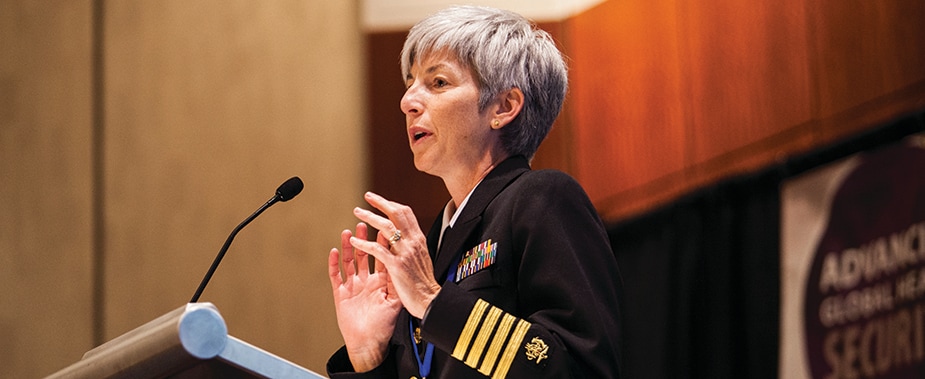Message from the Director
October 5, 2020

CAPT Nancy Knight, MD. Photo: Sara Holcombe
The global flow of information, goods, and people means that we live in an increasingly interconnected world. But just as people can move across countries, so too can diseases; within 36 hours a pathogen could conceivably travel from a rural village to cities on every continent.
Shared risk means shared responsibility. Today’s global health challenges require collaboration among countries, particularly neighboring countries, which often have familial, cultural, linguistic, social, and economic ties. In this era, no country can protect itself alone. We must build regional networks, relationships, and shared assets to help nations minimize their public health risk and maximize their capacity to quickly contain threats.
Regional collaborations are a cornerstone of global health security and are instrumental in addressing the public health threats of our time. They allow us to strengthen communication, consolidate functions, create efficiencies, and accelerate progress. Through the work of the Division of Global Health Protection (DGHP), CDC will continue to invest in robust and resilient regional public health systems so that countries can leverage each other’s expertise and benefit from the knowledge gained by their neighbors to fight emerging and re-emerging pathogens.
Every day, members of the DGHP team provide technical expertise to dozens of countries around the world. They bring countries together to strategize on the best ways to develop strong disease surveillance systems, laboratory networks, cadres of public health professionals, and emergency response structures. Working side by side with partners from multiple governments, faith-based groups, nongovernmental organizations, academic institutions, and more, DGHP staff bring their world-class knowledge and skills to bear on the most pressing global health security issues faced by each region of the world.
In this issue of Updates from the Field, you will read about how DGHP and other CDC groups have connected people and within different regions—Africa, the Americas, the Middle East/Europe, and Asia—and around the globe. For example, in Africa, we connected disease detectives from Nigeria and Benin to respond to a Lassa fever outbreak. In the Americas, we addressed a deadly fungus and fought the spread of measles. In the Middle East/Europe, we helped improve vaccination coverage for polio in Syria and in Asia we worked to bring safe water to Rohingya refugee camps in Bangladesh. These are a few of the many shining examples of the difference that CDC’s efforts make and how a regional approach can safeguard and improve global health security.
I hope you enjoy reading about our impact and that you will consider how you too can be part of the work to create a safer, healthier world.

CAPT Nancy Knight, MD
Director, Division of Global Health Protection
Center for Global Health